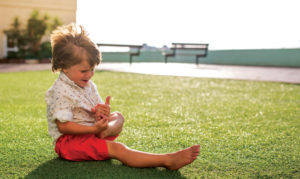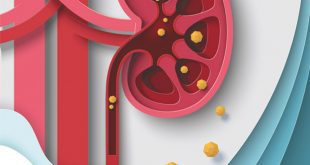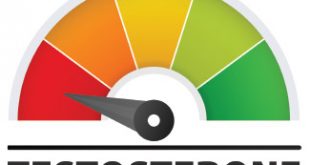 There are a growing number of children with foot conditions. Foot and ankle pain is common in children and adolescents. Problems are usually related to skeletal maturity and are relatively specific to the age of the child. Evaluation and management are challenging and requires a thorough history and physical exam and understanding of the pediatric skeleton.
There are a growing number of children with foot conditions. Foot and ankle pain is common in children and adolescents. Problems are usually related to skeletal maturity and are relatively specific to the age of the child. Evaluation and management are challenging and requires a thorough history and physical exam and understanding of the pediatric skeleton.
Most foot and ankle pain in the active pediatric population is associated with minor trauma or repetitive stress combined with abnormal biomechanics of the foot and lower extremity. Older children may isolate pain to a specific site, whereas toddlers are more likely to limp or refuse to bear weight. Often there is no clear history of a traumatic event. Numerous, non-traumatic diseases masquerade as injuries. However, one common area for children to experience pain is in the heel of the foot.
Heel Pain
Heel pain in adolescents may be caused by a condition called Sever’s disease. Sever’s disease is pain along a growth plate at the back of the heel and usually occurs in active children ages 8 to 14 years old. The pain is caused by strain from the Achilles tendon, which attaches to the back of the heel. One reason children may be susceptible to heel pain is that calf muscles and the Achilles tendon are tight during growth spurts, which puts stress on the heel bone.
More on Sever’s Disease according to the American College of Foot & Ankle Surgeons (ACFAS):
Calcaneal Apophysitis
(Sever’s Disease)
It typically affects children between the ages of 8 and 14 years old, because the heel bone (calcaneus) is not fully developed until at least age 14. Until then, new bone is forming at the growth plate (physis), a weak area located at the back of the heel. When there is too much repetitive stress on the growth plate, inflammation can develop. Sever’s disease, is not a true “disease.” It is the most common cause of heel pain in children and can occur in one or both feet.1
Heel pain in children differs from the most common type of heel pain experienced by adults. While heel pain in adults usually subsides after a period of walking, pediatric heel pain generally doesn’t improve in this manner. In fact, walking typically makes the pain worse.1
Causes
Overuse and stress on the heel bone through participation in sports is a major cause of calcaneal apophysitis. The heel’s growth plate is sensitive to repeated running and pounding on hard surfaces, resulting in muscle strain and inflamed tissue. For this reason, children and adolescents involved in soccer, track, or basketball are especially vulnerable.1
Other potential causes of calcaneal apophysitis include obesity, a tight Achilles tendon, and biomechanical problems such as flatfoot or a high-arched foot.1
Symptoms of calcaneal apophysitis may include:1
Pain in the back or bottom of the heel
Limping
Walking on toes
Difficulty running, jumping, or participating in usual activities or sports
Pain when the sides of the heel are squeezed
Tiredness
Diagnosis
To diagnose the cause of the child’s heel pain and rule out other more serious conditions, the foot and ankle surgeon obtains a thorough medical history and asks questions about recent activities. The surgeon will also examine the child’s foot and leg. X-rays are often used to evaluate the condition. Other advanced imaging studies and laboratory tests may also be ordered.1
Treatment1
The surgeon may select one or more of the following options to treat calcaneal apophysitis:
Reduce activity – The child needs to reduce or stop any activity that causes pain.
Support the heel – Temporary shoe inserts or custom orthotic devices may provide support for the heel.
Medications – Nonsteroidal anti-inflammatory drugs (NSAIDs), such as ibuprofen, help reduce the pain and inflammation.
Physical therapy – Stretching or physical therapy modalities are sometimes used to promote healing of the inflamed issue.
Immobilization – In some severe cases of pediatric heel pain, a cast may be used to promote healing while keeping the foot and ankle totally immobile.
Often heel pain in children returns after it has been treated because the heel bone is still growing. Recurrence of heel pain may be a sign of calcaneal apophysitis, or it may indicate a different problem. If your child has a repeat bout of heel pain, be sure to make an appointment with your foot and ankle surgeon.1
Mid Florida Foot, Ankle & Vein Clinic provides pain-reducing, comprehensive, cutting-edge treatment for children and adults. Their podiatrist, Dr. Gabriel Delgado, can treat all foot problems and even performs in-office surgeries. Rest assured you’ll get patient-focused care from their highly skilled and compassionate staff.
To find out more, or to schedule your appointment, please contact Mid Florida Foot, Ankle & Vein Clinic today.
Dr. Gabriel Delgado prides himself on taking excellent care of his patients and making them feel at home. He is bilingual and a native and current resident of Lakeland, FL with his wife and 2 kids. He is a graduate from the University of Florida with a Medical Degree from Barry University followed by residencies at the Veterans Hospital of West Palm Beach, FL and St. Luke Medical Center in Phoenix, AR. He is Board Certified in Podiatric Medicine and Surgery and has received Certificates of Appreciation from the West Palm Beach VA Medical Center for his dedicated service to the veteran population.
You’re not just another patient in his office, he takes the time to listen. Earning your trust, respect and exceeding expectations by providing a compassionate and professional environment. With over 20 years of being in practice, Dr. Gabriel Delgado always strives to provide the best healthcare for his patients.
Mid Florida Foot, Ankle & Vein Clinic
Lakeland Office
203 Kerneywood St.
Lakeland, FL 33803
863-686-1641
Bartow Office
510 West Main St.
Bartow, FL 33830
863-534-3668
 Central Florida Health and Wellness Magazine Health and Wellness Articles of the Villages
Central Florida Health and Wellness Magazine Health and Wellness Articles of the Villages



